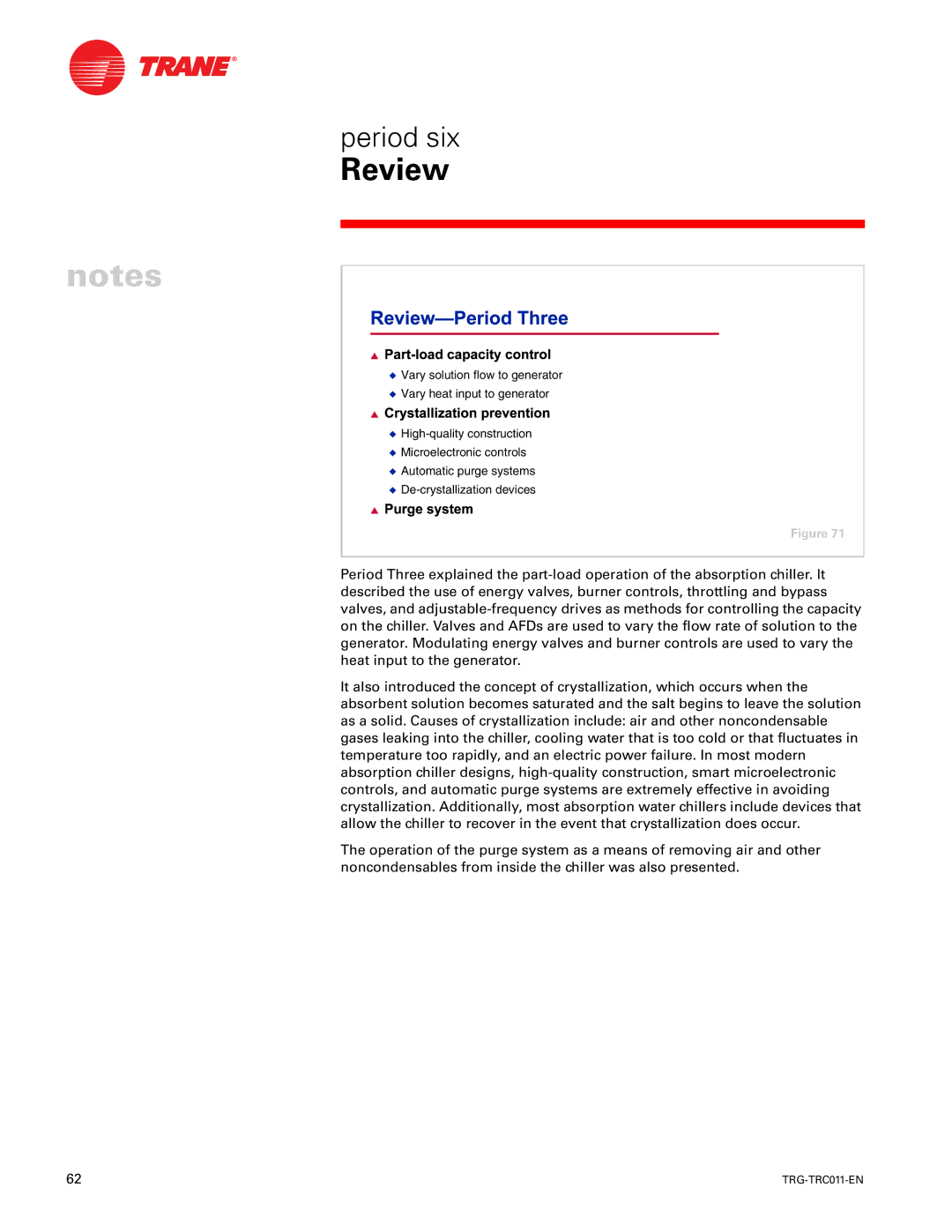
period six
Review
notes
▲
◆Vary solution flow to generator
◆Vary heat input to generator
▲ ![]()
◆
◆Microelectronic controls
◆Automatic purge systems
◆
▲ ![]()
Figure 71
Period Three explained the
It also introduced the concept of crystallization, which occurs when the absorbent solution becomes saturated and the salt begins to leave the solution as a solid. Causes of crystallization include: air and other noncondensable gases leaking into the chiller, cooling water that is too cold or that fluctuates in temperature too rapidly, and an electric power failure. In most modern absorption chiller designs,
The operation of the purge system as a means of removing air and other noncondensables from inside the chiller was also presented.
62 |
|
